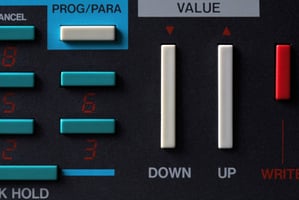This week, 14 EDT team members from four countries (supported by two partners, one toddler and...
On zebras and unicorns
I have a confession to make: many years ago, I chose the zebra as EDT’s icon because I just love zebras. It wasn’t an elaborate marketing ploy or a clever metaphor for the business. I chose the zebra because I’ve always been intrigued by and drawn to these magnificent creatures.

Over the years, I’ve had many brand, PR, or marketing types politely suggest that I dump our corporate icon. “Yes, Jo, I know it’s a stunning animal, but it doesn’t relate to your target market, represent your solution, or speak to your customers.”
I stubbornly resisted. “It’s not negotiable. The Zebra or Nothing!” I even performed a little conceptual yoga to align the zebra to our corporate values: Distinctive. Nimble. Authentic. Job done.
At the recent LawFest conference in Auckland, a long-standing colleague saw the zebra on our trade display banner and said, “I can see why you’ve chosen this icon, Jo – EDT is definitely a zebra company”.
To my great delight, he then explained the characteristics of a zebra company as compared with its cousin, the unicorn. Turns out, a zebra company is a concept that emerged during a series of blogs in 2017, long after we had chosen our icon.
Unicorns vs zebras
A unicorn is a start-up that rapidly reaches a valuation of $1 billion plus, usually through venture capital funding.
It is a mythical animal and those investing in unicorn companies are often seeking magical returns from exponential growth or brilliant IPO yields. Companies striving for unicorn status work hard to build cachet and hype that will attract such investment.
By comparison, a zebra is a real animal. Zebra companies are more focused on proven business models and sustainable products than they are on investors. They service and thrive in a particular niche. They are lean, efficient, and authentic.
Leaders trying to build unicorn companies sometimes focus more on their own net worth than net value or benefits to society. They tend to strive for growth at all costs and often measure success in terms of rounds of investor funding or extravagant IPOs. By comparison, zebras tend to focus on real revenue from real clients buying real products.
Profit with purpose
But the most important difference is that zebras are inspired by a vision to improve society in some way.
They focus on growth, sure, but sustainable growth, not short-lived, artificially inflated growth. Profit is a means to an end because it enables the zebra’s vision to become reality. Zebras genuinely care about their people, their customers, and making a difference. Because of this profit-with-purpose duality, they are black and white, according to Mara Zepeda, CEO, and co-founder of Switchboard.
The normal Silicon Valley model rewards growth at all costs but this can cause rot deep within the corporate ethos. We’ve all seen companies that focus more on spin for investors than products for customers. This can disguise fragile business models or flawed products. It can also lead to a business bloated with investor cash that is used to fund unprofitable operations that are unsustainable over the longer term.
Investor-led greed creates leaders who focus on the wrong things, leaders who are disengaged from the real business and the needs of their customers. The resulting misaligned corporate culture can foster disillusionment within underfunded and underappreciated engineering teams, anxiety among sales teams who are saddled with unrealistic targets and cynicism from a client base dealing with the results of broken promises.
Ultimately, as the glitter fades, venture capitalists often abandon their would-be unicorns through dodgy exits or pump-and-dump IPOs so they can turn their attention to the hunt for their next mythical object.
Building EDT with a zebra mindset
At EDT We’ve grown the business in a way that has meant, at times, swimming against the current of Silicon Valley conventional wisdom. EDT has:
-
Resisted venture capital, preferring organically funded growth over two decades
-
Invested in R&D and rockstar engineers rather than a marketing and sales machine
-
Generated new business opportunities by word-of-mouth referrals from satisfied clients who we’ve developed trusted, long-term relationships with, not slick sales pitches
-
Kept a low profile, which mitigates risks for us and our clients who don’t want to see us shouting from the rooftops
-
Grown steadily by around 20% per annum, profitably and organically – that’s not exponential but it’s sustainable and manageable
-
Focused on building a phenomenal team of domain experts who are motivated to deliver transformative innovation and long-term client relationships rather than to sell product to meet quarterly targets.
On that last point, our people thrive on work-life harmony – our four-day week certainly helps. They’re not looking for share options that will let them cash out as soon as possible. They know I’m in for the long haul and they’re motivated to share success along the way. Most importantly, we seek people who are aligned with our values and inspired by our vision: empowering our clients to deliver effective justice.
Proud to be a zebra
It turns out the corporate mascot I chose for no good reason has many kinds of symbolic relevance, so now I’m even more loyal to our beautiful logo.
So, there you go in black and white: the zebra stays.
I’d love to hear your thoughts!
Further reading
Jennifer Brandel, Mara Zepeda and Astrid Sholz, Zebras Fix What Unicorns Break, Medium, 9 March 2017
Jennifer Brandel, Mara Zepeda, Astrid Sholz and Aniyia Williams, Zebras let’s get in formation, Medium, 12 July 2017
Rebecca Honeyman, Silicon Valley should reward Zebras not Unicorns, TechCrunch.com, 22 December 2020
Ram Rastogi, Investors are now moving from ‘Unicorns’ to ‘Green Zebras’ startups, 1 May 2022
Stepan Aslanyan, Stop looking for unicorns – be a zebra instead, Forbes Business Council, 3 June 2022
Sachi Wickramage, Are You Dreaming of Becoming a Unicorn or a Zebra?, Social Change Central




